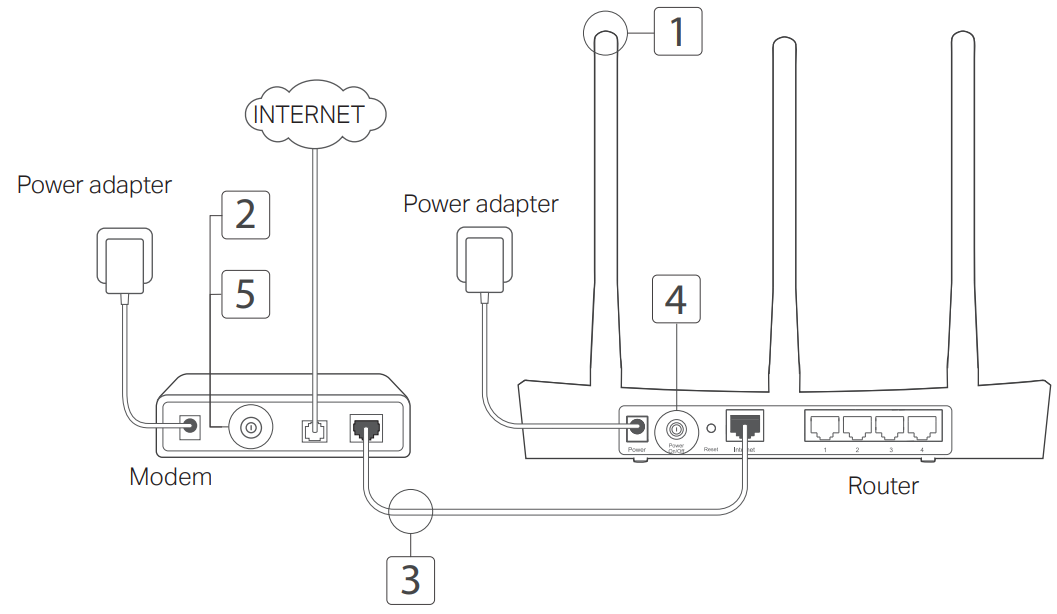Tp-Link Wireless Router Guide | Installation & Configuration

Content

Introduction of TP-Link wireless router
The TP-Link wireless router is a powerful and reliable device designed to provide fast and stable wireless connections for all your devices. With its advanced technology and sleek design, this router is perfect for both home and office use. The estimated price of this TP-Link wireless router is around $80, and it was launched in the year 2021.
Detailed Specifications of TP-Link Router
The wireless router comes with a range of key features, including a dual-core processor, four external antennas for improved coverage, and support for the latest wireless standards. It also has a range of advanced features, such as beamforming technology, which focuses the wireless signal directly towards your devices, and parental controls, which allow you to manage your children's internet usage. Additionally, this router supports up to 32 connected devices, making it perfect for large households or small businesses.
Description of wireless router
The TP-Link router is a high-performance device that delivers fast and stable wireless connections for all your devices. With its dual-core processor and four external antennas, this router provides excellent coverage and can support up to 32 connected devices. It also comes with a range of advanced features, such as beamforming technology and parental controls, which make it easy to manage your network and keep your family safe online. Whether you're streaming movies, gaming online, or working from home, this router has the power and performance you need to stay connected.
Connect the Hardware
If your Internet connection is through an Ethernet cable from the wall instead of through a DSL/Cable/Satellite modem, connect the Ethernet cable directly to the router’s Internet port, and skip Step 2,3,5 to complete the hardware connection.
Features of TP-Link wireless router

- Install the antennas. If the antennas are already fixed, move to the next step.
- Turn off the modem, and remove the backup battery if it has one.
- Connect the modem to the Internet (or WAN) port on your router with an Ethernet cable.
- Turn on the router, and wait for it to start.
- Turn on the modem.
Configure via Web Browser of wireless router
- Connect your computer to the router (Wired or Wireless).
- Wired
Turn off the Wi-Fi on your computer and connect your computer to the router’s LAN (1/2/3/4) port using an Ethernet cable. - Wireless
Connect your computer to the router wirelessly. The SSID and Wireless Password are on the router’s label.
- Wired
- Enter http://tplinkwifi.net in the address bar of a web browser. Create a password for future login attempts, or use admin for both username and password for some routers.
Note: If the login window does not appear, please refer to FAQ > Q1. - Go to the Quick Setup page, and follow the step-by-step instructions to complete the initial configuration.
Enjoy!
Now your wired and wireless devices can connect to the Internet
Note: If you have changed the SSID and wireless password during the configuration, use the new SSID and wireless password to join the wireless network.
Tether App
The TP-Link Tether app provides a simple, intuitive way to access and manage your router. You can block unwelcome devices, set up Parental Controls, configure your wireless settings and more.
Scan the QR code to download the TP-Link Tether app from the Apple App Store or Google Play.

Pros & Cons of TP-Link wireless router
Pros
- Fast and stable wireless connections
- Supports up to 32 connected devices
- Advanced features, such as beamforming technology and parental controls
- The dual-core processor and four external antennas for excellent coverage
- Affordable price
Cons
- May be overkill for small households or those with few devices
- Setup can be complicated for some users
Customer Reviews of TP-Link Wireless Router
Customers are generally very happy with the TP-Link wireless router, praising its fast and stable connections, excellent coverage, and advanced features. However, some users have found the setup process to be complicated, and others have noted that it may be overkill for small households or those with few devices. Overall, though, this router is highly recommended for those looking for a reliable and affordable wireless solution.
Most Common Complaints of TP-Link Wireless Router
The most common complaints about the wireless router are related to its setup process and its suitability for small households or those with few devices. Some users have also reported issues with firmware updates and customer support. However, these complaints are relatively rare, and the majority of users are very satisfied with this product.
Faqs
How can I proceed if the window for logging in is not visible?
If I am unable to access the Internet, what options do I have?
How can I get the router back to the factory settings?
What should I do if my wireless network password is lost?
If I am unable to access my TP-Link router, what should I do?
How can I improve my TP-Link wireless router's performance?
How can I set up my TP-Link router's parental controls?
Can I connect my TP-Link router to a VPN?
What should I do if my TP-Link router keeps disconnecting?
What is the typical TP-Link wireless router warranty?
Leave a Comment
